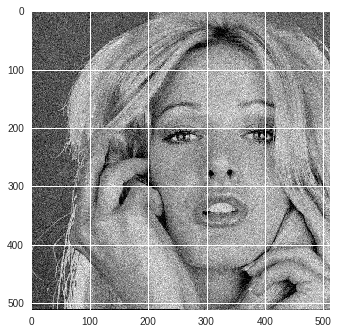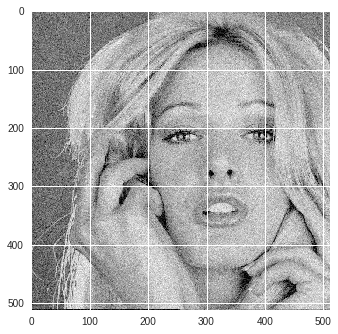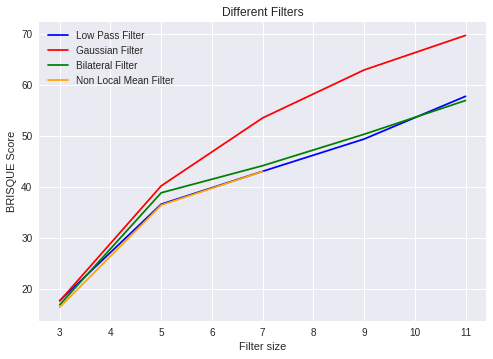An image filtering is a technique through which size, colors, shading and other characteristics of an image are altered. An image filter is used to transform the image using different graphical editing techniques. Image filters are usually done through graphic design and editing software.
Image filtering is useful for many applications, including smoothing, sharpening, removing noise, and edge detection. A filter is defined by a kernel, which is a small array applied to each pixel and its neighbors within an image. In most applications, the center of the kernel is aligned with the current pixel, and is a square with an odd number (3, 5, 7, etc.) of elements in each dimension. The process used to apply filters to an image is known as convolution, and may be applied in either the spatial or frequency domain.
- Python3
- OpenCV
- Numpy
- Matplotlib
import cv2
import matplotlib.pyplot as plt
import numpy as np
import math
import matplotlib.image as mpimg
Function that handles both rgb and grayscale image and shows them accordingly.
Parameters:
- img: input img
Return: None
img = mpimg.imread("original.jpg")
def imshow(img):
if len(img.shape) < 3:
plt.imshow(img, cmap="gray")
elif img.shape[2] == 1:
plt.imshow(np.resize(img,(img.shape[0],img.shape[1])), cmap="gray")
else:
plt.imshow(img)
if len(img.shape) < 3:
img.resize(*img.shape,1)
imshow(img)
print(img.shape)
(512, 512, 1)
Function that apply gamma correction to input image
Parameters:
- img(2d/3d matrix): input image
- gamma(double): gamma contant
Return:
- Gamma Corrected image
# Gamma Coorection
def gammaCorrection(img, gamma):
out = np.power(img.copy(), gamma)
return out.astype(np.uint8)
imshow(gammaCorrection(img,0.7))
cv2.imwrite("gamma.jpg",img)
True
Implementation of gaussian function
Parameters:
- x, y and sigma(double): gaussian function parameters
Return:
- Scaler value at x,y for sigma of gaussian function
Function that applies gaussian filter to an image
Parameters:
- size(tuple): size of gaussian filter
- sigma(double): parameter of gaussian function
Return:
- Gaussian Filter(2d matrix)
# low pass filter
(lpfw,lpfh) = (3,3)
lowPassFilter = np.ones((lpfw,lpfh))*1/(lpfw*lpfh)
# high pass filter
(hpfw,hpfh) = (3,3)
highPassFilter = -1*np.ones((hpfw,hpfh))
highPassFilter[hpfw//2,hpfh//2] = -np.sum(highPassFilter)-1
# gaussian filter
def gfunc(x,y,sigma):
return (math.exp(-(x**2 + y**2)/(2*(sigma**2))))/(2*3.14*(sigma**2))
def gaussFilter(size, sigma):
out = np.zeros(size)
for i in range(size[0]):
for j in range(size[1]):
out[i,j] = gfunc(i-size[0]//2,j-size[1]//2, sigma )
return out/np.sum(out)
(gfw,gfh) = (3,3)
gaussianFilter = gaussFilter((gfw,gfh),1)
print("Low Pass Filter")
print(lowPassFilter)
print("High Pass Filter")
print(highPassFilter)
print("Gaussian Filter")
print(gaussianFilter)
Low Pass Filter
[[0.11111111 0.11111111 0.11111111]
[0.11111111 0.11111111 0.11111111]
[0.11111111 0.11111111 0.11111111]]
High Pass Filter
[[-1. -1. -1.]
[-1. 8. -1.]
[-1. -1. -1.]]
Gaussian Filter
[[0.07511361 0.1238414 0.07511361]
[0.1238414 0.20417996 0.1238414 ]
[0.07511361 0.1238414 0.07511361]]
Function that applies convolution to an 2d/3d matrix or numpy array on the given filter
Parameters:
- image (2d/3d matrix): image on which convolution will be applied with given filter
- filter (2d matrix): filter which will applied to image
Return:
- filtered image(2d/3d matrix)
def conv(image, filter):
iw,ih,id = image.shape
fw,fh = filter.shape
out = np.zeros((iw-fw+1,ih-fh+1,id))
for d in range(id):
for w in range(ih-fh+1):
for h in range(iw-fw+1):
out[w,h,d] = np.sum(filter*image[w:w+fh , h:h+fw , d])
if id == 1:
return np.resize(out, (out.shape[0], out.shape[1])).astype(np.uint8)
else:
return out.astype(np.uint8)
fig = plt.figure(1, figsize=(18, 16))
print(" ========================================= Low Pass Filter =========================================")
for i in range(3,8,2):
splot = plt.subplot(130-1+((i+1)//2))
splot.set_xlabel(str(i)+"x"+str(i))
(lpfw,lpfh) = (i,i)
lowPassFilter = np.ones((lpfw,lpfh))*1/(lpfw*lpfh)
low_image = conv(img, lowPassFilter)
imshow(low_image)
cv2.imwrite("low"+str(i)+"x"+str(i)+".jpg",low_image)
plt.show()
print()
fig = plt.figure(2, figsize=(18, 16))
print(" ========================================= Gaussian Filter =========================================")
for i in range(3,8,2):
splot = plt.subplot(130-1+((i+1)//2))
splot.set_xlabel(str(i)+"x"+str(i))
(gfw,gfh) = (i,i)
gaussianFilter = gaussFilter((gfw,gfh),4)
gaussian_image = conv(img, gaussianFilter)
imshow(gaussian_image)
cv2.imwrite("gaussian"+str(i)+"x"+str(i)+".jpg",gaussian_image)
plt.show()
========================================= Low Pass Filter =========================================
========================================= Gaussian Filter =========================================
Function that create Bilateral Filter according to image portion and give pixel value after applying it to image part
Parameters:
- i,j: pixel value for which bilateral filter will be applied
- fw,fh: Filter width and filter height
- image: input image on which pixel (i,j) exist
- sigma1, sigma2: bilateral function parameters
- bilaterealWFilter: weighted bilateral Filteral
Function that apply convolution on given image with the bilateral filter of given size
Parameters:
- image: input image on which bilateral filter will be applied
- fw,fh: widht and height if bilateral filter
Return:
- returns a bilateral filtered image (2d/3d matrix)
# bilateral filter
def bfunc(i,j,fw,fh,image,sigma1, sigma2, bilateralWFilter):
imgwork = image[i - fh//2:i+1 + fh//2, j - fw//2:j+1 + fw//2, :]
bilateralIFilter = ((imgwork - image[i, j,:])**2 )/(2*(sigma1**2))
bilateralFilter = np.exp(-1*bilateralIFilter)*bilateralWFilter
bilateralFilter = bilateralFilter/np.sum(bilateralFilter,axis=(0,1))
return np.sum(np.multiply(imgwork, bilateralFilter),axis=(0,1))
def bilateralFilterConv(image, fw,fh):
size = image.shape
sigma1 = 40
sigma2 = 40
bilateral1 = 2*3.14*sigma2*sigma2*gaussFilter((fw,fh), sigma2)
if len(image.shape) < 3 or image.shape[2] == 1:
bilateralWFilter = np.resize(bilateral1,(*bilateral1.shape,1))
else:
bilateralWFilter = np.stack([bilateral1, bilateral1, bilateral1], axis=2)
out = np.zeros((size[0]-2*fw +1,size[1]-2*fh +1,size[2]))
for i in range(size[0]-2*fh +1):
for j in range(size[1]-2*fw +1):
out[i,j,:] = bfunc(i+fw-1, j+fh-1, fw, fh, image, sigma1, sigma2, bilateralWFilter)
if id == 1:
return np.resize(out, (out.shape[0], out.shape[1])).astype(np.uint8)
else:
return out.astype(np.uint8)
fig = plt.figure(1, figsize=(18, 16))
print(" ========================================= Bilateral Filter =========================================")
for i in range(3,8,2):
splot = plt.subplot(130-1+((i+1)//2))
splot.set_xlabel(str(i)+"x"+str(i))
bfw,bfh = (i,i)
bilateral_image = bilateralFilterConv(img, bfw,bfh)
imshow(bilateral_image)
cv2.imwrite("bilateral"+str(i)+"x"+str(i)+".jpg",bilateral_image)
plt.show()
========================================= Bilateral Filter =========================================
Function that create Non Local Mean Filter according to image portion and give pixel value after applying it to image part.
Parameters:
- i,j: pixel value for which NLM filter will be applied
- fw,fh: Filter width and filter height
- nw,nh: neighbour width and height
- image: input image on which pixel (i,j) exist
- sigma1, sigma2: bilateral function parameters
- nlmWFilter: bilateral Filteral
Function that apply convolution on given image with the NLM filter of given size.
Parameters:
- image: input image on which NLM filter will be applied
- nw,nh: neighbour width and height
- fw,fh: widht and height if NLM filter
Return:
- returns a NLM filtered image (2d/3d matrix)
# Non Local Mean filter
def nlmfunc(i, j, fw, fh, nw, nh ,image,sigma1, sigma2, nlmWFilter):
imgmain = image[i - fh//2:i+1 + fh//2, j - fw//2:j+1 + fw//2, :]
nlmFilter = 0
for p in range(-(nh//2), 1+(nh//2)):
for q in range(-(nw//2), 1+(nw//2)):
imgneighbour = image[i + p - fh//2: i+1+p + fh//2, j+q - fw//2:j+1+q + fw//2, :]
nlmIFilter = ((imgmain - imgneighbour)**2 )/(2*(sigma1**2))
nlmFilter += np.exp(-1*nlmIFilter)
nlmFilter = nlmFilter/np.sum(nlmFilter,axis=(0,1))
nlmFilter = nlmFilter*nlmWFilter
nlmFilter = nlmFilter/np.sum(nlmFilter,axis=(0,1))
return np.sum(np.multiply(imgmain, nlmFilter),axis=(0,1))
def nlmFilterConv(image, fw,fh, nw, nh):
size = image.shape
sigma1 = 20
sigma2 = 20
nlmWFilter1 = 2*3.14*sigma2*sigma2*gaussFilter((fw,fh), sigma2)
if len(image.shape) < 3 or image.shape[2] == 1:
nlmWFilter = np.resize(nlmWFilter1,(*nlmWFilter1.shape,1))
else:
nlmWFilter = np.stack([nlmWFilter1, nlmWFilter1, nlmWFilter1], axis=2)
out = np.zeros((size[0]-2*fw +1-nw//2,size[1]-2*fh +1-nh//2, size[2]))
for i in range(nh//2, size[0]-2*fh +1-nh//2):
for j in range(nw//2, size[1]-2*fw +1- nw//2):
out[i,j,:] = nlmfunc(i+fw-1, j+fh-1, fw, fh, nw, nh, image, sigma1, sigma2, nlmWFilter)
out[0:nh//2,:,:] = out[nh//2,:,:]
out[:,0:nw//2,:] = out[:,nw//2,:,np.newaxis]
if id == 1:
return np.resize(out, (out.shape[0], out.shape[1])).astype(np.uint8)
else:
return out.astype(np.uint8)
fig = plt.figure(1, figsize=(18, 16))
print(" ========================================= NLM Filter =========================================")
for i in range(3,8,2):
splot = plt.subplot(130-1+((i+1)//2))
splot.set_xlabel(str(i)+"x"+str(i))
nlmfw,nlmfh = (i,i)
nlm_image = nlmFilterConv(img, nlmfw,nlmfh, i, i)
imshow(nlm_image)
cv2.imwrite("nlm"+str(i)+"x"+str(i)+".jpg",nlm_image)
plt.show()
========================================= NLM Filter =========================================
All Comparisons were done using "No Reference Image Quality Assessment". Non Local Mean was found best among all filters. However, all filters give the good results and scores given by them are close to each others scores.
print("Original Image Score of the given image: 61.09182487181366")
print("========================== Low Pass Filter=======================")
print("3x3: Score of the given image: 17.65453329005433")
print("5x5: Score of the given image: 36.57977626774763")
print("7x7: Score of the given image: 43.03394739384518")
print("9x9: Score of the given image: 49.367030925596936")
print("11x11: Score of the given image: 57.75450589281954")
print("========================== Gaussian Filter=======================")
print("3x3: Score of the given image: 17.598815117503335")
print("5x5: Score of the given image: 40.17641998372548")
print("7x7: Score of the given image: 53.51036518030489")
print("9x9: Score of the given image: 62.92074436030131")
print("11x11: Score of the given image: 69.7025214296061")
print("========================== Bilateral Filter=======================")
print("3x3: Score of the given image: 16.584317547327117")
print("5x5: Score of the given image: 38.824409207202365")
print("7x7: Score of the given image: 44.1374802117526")
print("9x9: Score of the given image: 50.30464610594149")
print("11x11: Score of the given image: 56.92915541182239")
print("========================== Non Local Mean Filter=======================")
print("3x3: Score of the given image: 16.369365771703586")
print("5x5: Score of the given image: 36.408236332713244")
print("7x7: Score of the given image: 43.01151838326959")
Original Image Score of the given image: 61.09182487181366
========================== Low Pass Filter=======================
3x3: Score of the given image: 17.65453329005433
5x5: Score of the given image: 36.57977626774763
7x7: Score of the given image: 43.03394739384518
9x9: Score of the given image: 49.367030925596936
11x11: Score of the given image: 57.75450589281954
========================== Gaussian Filter=======================
3x3: Score of the given image: 17.598815117503335
5x5: Score of the given image: 40.17641998372548
7x7: Score of the given image: 53.51036518030489
9x9: Score of the given image: 62.92074436030131
11x11: Score of the given image: 69.7025214296061
========================== Bilateral Filter=======================
3x3: Score of the given image: 16.584317547327117
5x5: Score of the given image: 38.824409207202365
7x7: Score of the given image: 44.1374802117526
9x9: Score of the given image: 50.30464610594149
11x11: Score of the given image: 56.92915541182239
========================== Non Local Mean Filter=======================
3x3: Score of the given image: 16.369365771703586
5x5: Score of the given image: 36.408236332713244
7x7: Score of the given image: 43.01151838326959
print("Garphs of Brisque Scores of Different Filters with there size")
x = [3,5,7,9,11]
y1 = [17.65453329005433, 36.57977626774763, 43.03394739384518, 49.367030925596936, 57.75450589281954]
y2 = [17.598815117503335, 40.17641998372548, 53.51036518030489, 62.92074436030131, 69.7025214296061]
y3 = [16.83974876871534, 38.824409207202365, 44.1374802117526, 50.30464610594149, 56.92915541182239]
x4 = [3, 5, 7]
y4 = [16.369365771703586, 36.408236332713244, 43.01151838326959]
plt.title("Different Filters")
plt.xlabel("Filter size")
plt.ylabel("BRISQUE Score")
plt.plot(x,y1, color="blue", label="Low Pass Filter")
plt.plot(x,y2, color="red", label="Gaussian Filter")
plt.plot(x,y3, color="green", label="Bilateral Filter")
plt.plot(x4,y4, color="orange", label="Non Local Mean Filter")
plt.legend(loc='upper left')
Garphs of Brisque Scores of Different Filters with there size
<matplotlib.legend.Legend at 0x7fe762e29e10>
- Brisque Scores was predicted using python repo which is implementation of paper "No Reference Image Quality Assessment in the Spatial Domain". "https://github.com/krshrimali/No-Reference-Image-Quality-Assessment-using-BRISQUE-Model"






